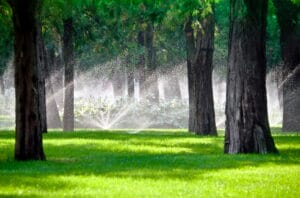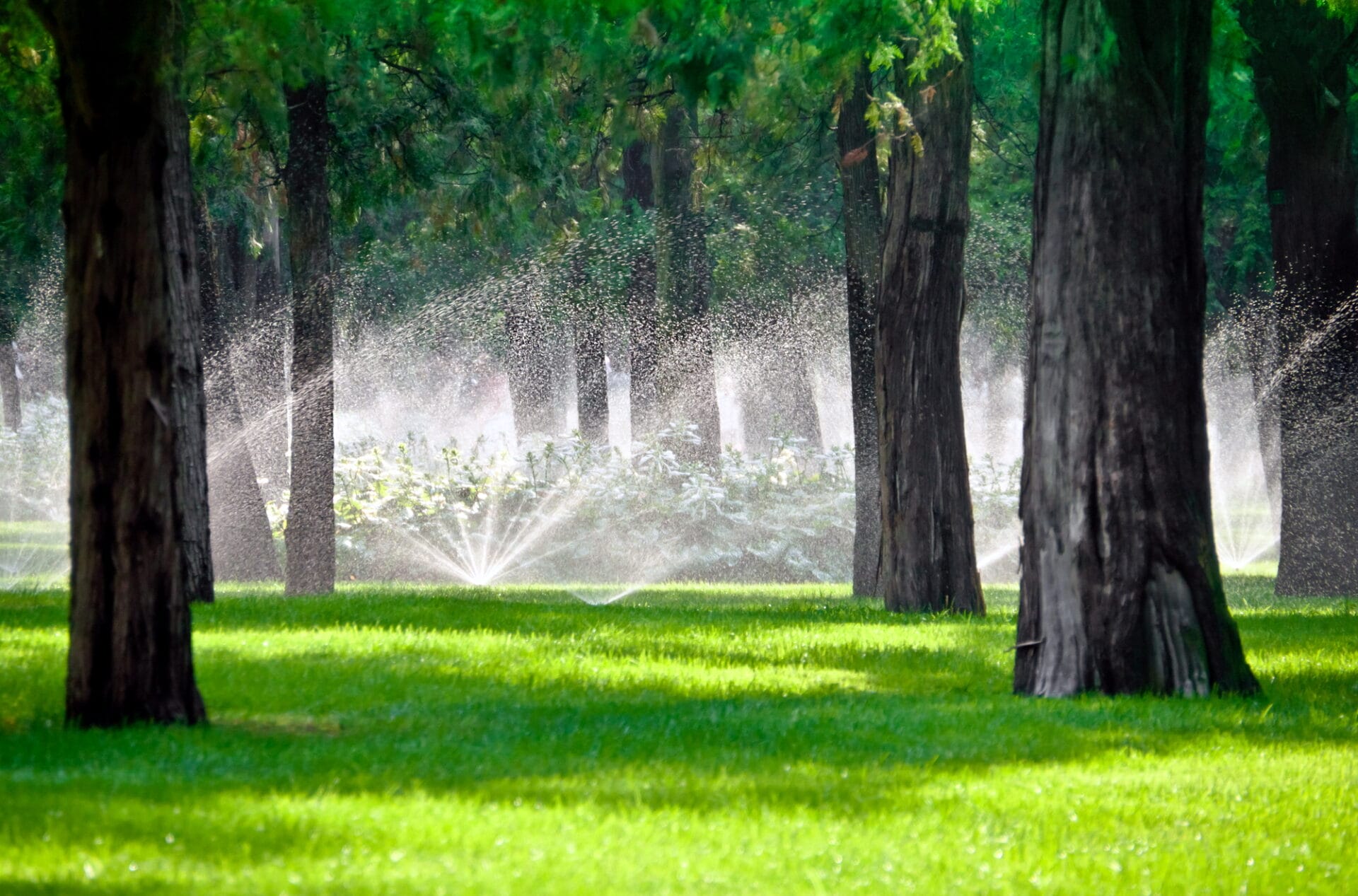No matter the type of property we service, landscaping is always a secondary concern to lawn care. They are both important, but commercial and residential property owners are well aware that the lawn is the first impression of their property. This is what their neighbors will judge them on, and what commercial tenants will use in part to make a determination about their future at the property. Because of the dry and hot climate conditions of Arizona, many people do not even have real turf on their lawns. This is because of the essential maintenance that must be done to keep real grass healthy in the heat. However, in this blog, we will show you how a combination of irrigation and fertilization can keep you covered and how to utilize both efficiently.

Why Lawn Fertilization?
We thought about separating this section into two, discussing what fertilizer is composed of and its benefits. However, we figured it would be best to cover it all in one fell swoop. Firstly, like fertilization of anything in your landscape, this is the addition of nutrients directly to the soil nearest the root systems of the plant. With turf, these roots are all over so application is performed across the entire lawn. Most lawn fertilizers consist of nitrogen, potassium, and phosphorus. Each individual contributes to the overall health of the turf. Nitrogen deepens the color, while phosphorus and potassium optimize the energy intake and storage processes so nutrients are utilized more efficiently. The benefit of doing this on a routine basis is that your turf will never go without. When a lack of nutrients exists, your turf is much more likely to take on disease or weeds in this weakened state. This keeps growth stable and ensures that roots develop deep into the soil chasing those nutrients.
 Why Lawn Irrigation?
Why Lawn Irrigation?
While the nutrients we just mentioned are half the equation, in the Arizona climate the other half is water. It is not always as available as we would like it to be, and rainfall can be infrequent. This can lead to drought conditions or local regulations about water usage. If you have an authentic grass lawn, you need to get moisture to the turf. This is where an irrigation system comes in handy. Modern technology has offered us irrigation systems that now rely on automation and live tracking of weather data to identify the optimal quantity of water. Turf is fed the perfect amount, and you save money as you likely overwatered previously. Our team at Zebrascapes can perform irrigation installation, maintenance, and inspections when something may be awry.
Using Fertilization and Irrigation In Tandem
The truth is that you need both of these services to maintain healthy turf in Arizona. Irrigation is a year-round endeavor, which a modern system makes much easier than watering by hand. Fertilization can be performed on an annual or bi-annual basis, whatever your turf needs. We recommend an initial treatment in the spring to give your turf a big boost, and perhaps before the winter for storage in case of frost or freeze. Using irrigation and fertilization together is the key to unlocking the true potential of your turf.

Should I Water My Plants and Trees?
In such an arid environment, proper irrigation is essential to maintain a healthy and vibrant landscape. This also includes keeping your trees and plants watered and healthy.
To achieve this, it is recommended to water deeply but infrequently. Deep watering encourages the roots of the plants and trees to grow deeper into the soil, seeking out water and nutrients. This, in turn, makes them more resilient to drought and less dependent on frequent watering. However, it is crucial to ensure that the soil has enough time to dry out between watering to prevent root rot and fungal diseases.
When it comes to emitter size, it is crucial to choose the right size for your plants’ water requirements. Trees typically require more water than smaller plants and shrubs, so larger emitter sizes, such as 2-gallon per hour, are recommended. This delivers more water to the tree’s root system, ensuring that it receives adequate hydration. On the other hand, smaller plants and shrubs require less water, and therefore, smaller emitter sizes, such as 1-gallon per hour, are sufficient.
We design, build and maintain fully functioning yards that meet our clients’ needs and exceed their expectations through quality, integrity, efficiency, teamwork, and relationships. Give us a call at (928) 830-4061 today.

